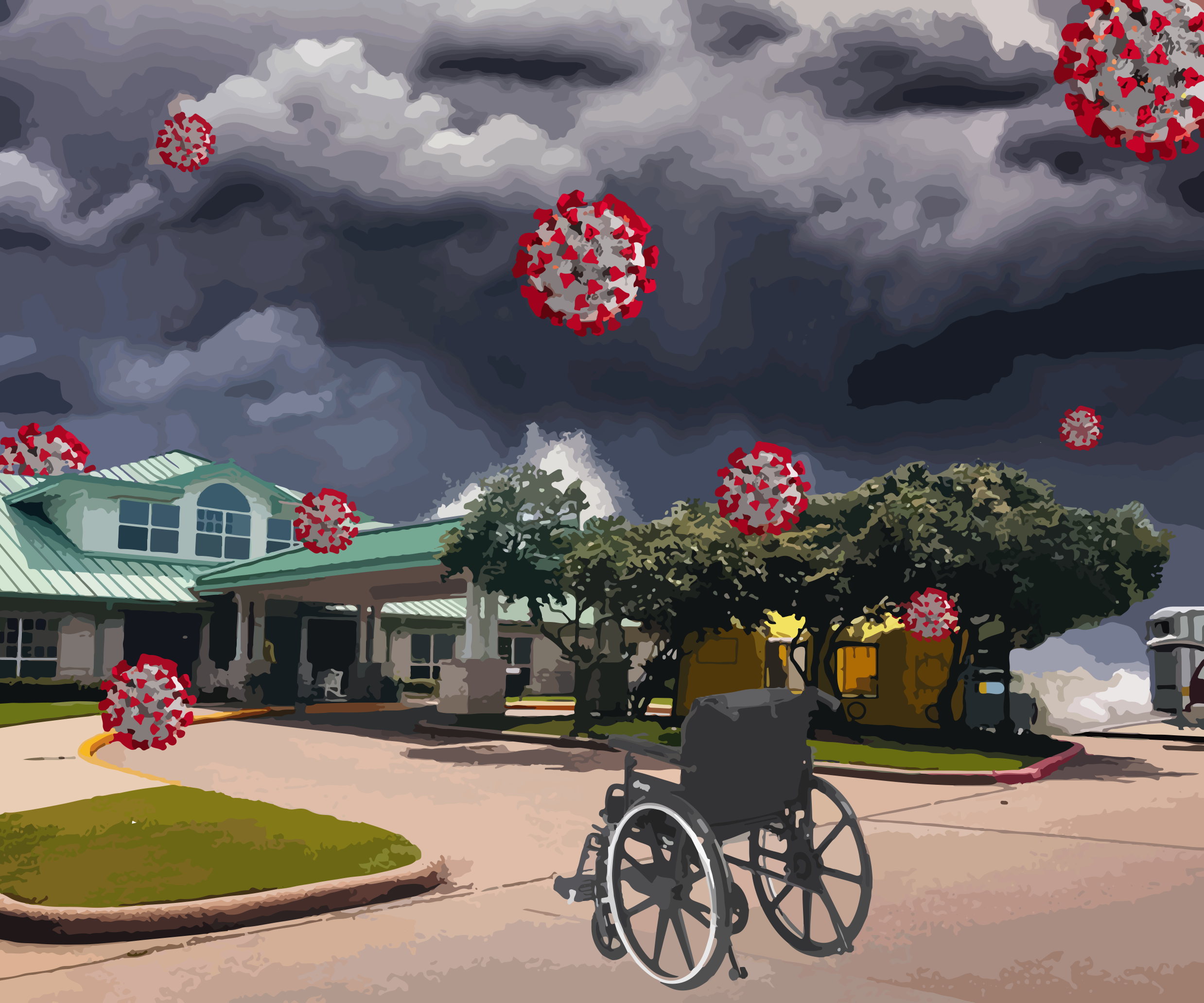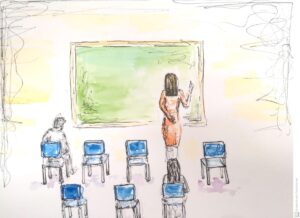When Hurricane Ida displaced thousands of people last month, at least 15 nursing home residents died. The storm arrived on the 16th anniversary of Hurricane Katrina, which claimed the lives of over 200 hospital and nursing home residents. Similar stories can be told about every disaster from Hurricane Maria to the Texas winter storm to the pandemic.
When we think of nursing homes and vulnerable populations, we usually think of the elderly, but disabled people make up the majority of the nursing home population. Approximately 96 percent of nursing home residents are disabled, and more than 15 percent are of working age. With climate disasters becoming more frequent, it’s important to understand why disabled people are consistently left behind. The answers lie in the workings of ableism and government neglect.
Let’s take a look at the pandemic. It’s estimated that nearly one-third of all COVID-19 deaths in the U.S. took place in nursing homes. These deaths were not accidental but a violation of civil rights. While most people with disabilities don’t need long-term care, for those who do require living assistance, multiple pieces of legislation exist to secure them quality care and autonomy in long-term care facilities, including the Nursing Home Reform Act, which has guaranteed “freedom from abuse, mistreatment, and neglect” since 1987.
Yet, time and time again, the government has failed to fulfill its responsibilities, succumbing to lobbying pressures for relaxed enforcement and putting disabled people at disproportionate risk. Since 2016, three-quarters of all U.S. nursing homes have had at least one infection-related infraction, including the failure to wash hands and sanitize equipment. In 2019, the Trump administration relaxed infection control efforts, staffing ratios, and penalties for nursing homes that don’t comply with safety standards. Nursing homes continue to be short-staffed, and their employees overworked and underpaid. All of this primed nursing homes for rapid COVID-19 infection and left their residents to die.
Marcie Roth, the Executive Director and CEO for the World Institute on Disability in Washington, D.C., calls the disproportionate deaths of disabled people in the pandemic a “genocide.”
“We are to this day still described as ‘vulnerable,’ ‘old,’ ‘with underlying conditions,’” Roth said. “We’re not even given the humanity of being identified as people with disabilities who have rights.”
These euphemisms are seen even at the highest levels of government. The Centers for Disease Control and Prevention (CDC) lists diabetes and heart disease, among other conditions, as conditions that increase the likelihood of severe illness from COVID-19. These conditions are recognized as disabilities under the Americans with Disabilities Act (ADA), which protects people with disabilities from unfair treatment. Nevertheless, pandemic guidelines have refrained from the use of the word “disability” and opted for phrases like “comorbidity” or “underlying conditions,” making it difficult to document disabled people in the pandemic and excluding them from response efforts.
Similar government negligence can be seen in extreme weather disasters. Since 2016, 43 percent of nursing homes have violated emergency requirements, leaving them unprepared to care for residents in a disaster. In Hurricane Irma, 12 residents died in a Florida rehabilitation center after the air conditioning failed and they weren’t evacuated for days. After Hurricane Maria, nursing homes in Puerto Rico went without power or supplies, putting the lives of people with disabilities, many of whom rely on electrical equipment or medications, at risk. It’s estimated that about a third of all deaths came from the disaster’s interruption of medical care.
Disabled people in Hurricane Maria were already at increased risk due to Puerto Rico’s political status. Puerto Rico has the highest rate of disabled adults in poverty in the U.S. and no voting representation in Congress. It receives a lower amount of Medicaid funding, and its residents are excluded from Supplemental Security Income; both are essential welfare programs for people with disabilities.
We should not consider the safety of disabled people only in times of disaster. Government neglect shapes the care they receive every day. Nevertheless, these cases of disaster provide opportunities to examine the cost of everyday inequalities and the people who pay the price.
We’re taught to see disasters as natural, as a product of environmental forces beyond human control. These cases show us, however, that measures can be taken to ensure disabled people are safe prior to disaster and included in recovery response. Too often the losses of disabled people are told as tragic stories, narratives that place blame on individual vulnerabilities. Such accounts are attractive; when we see disabled people as expected losses, we can become complacent. We can ignore the larger, messier, more negligent forces that determine who lives and dies in disaster.
Government negligence and ableism have implications for us all. It’s estimated that over 70 percent of adults who survive to the age of 65 will need long-term care before they die, and over a quarter of Americans have some type of disability. Who is considered “able-bodied” and “disabled” is determined by society. We will all benefit from a society that ensures the inclusion and security of all people—something that will only come with reforming the way we provide long-term care and the way we see disability. Typically excluded due to ableism, disabled people must have larger roles in decision making and disaster planning and response. Oversight of nursing homes should be improved and alternative models of care examined. Greater efforts must be made so that disabled people can live in their community and maintain their health, safety, and independence.
As we continue to grapple with extreme weather events, and as the end of the pandemic in the U.S. appears close, a return to normalcy for long-term care facilities won’t do. As Roth noted, “That is a failed way of serving human beings.”




